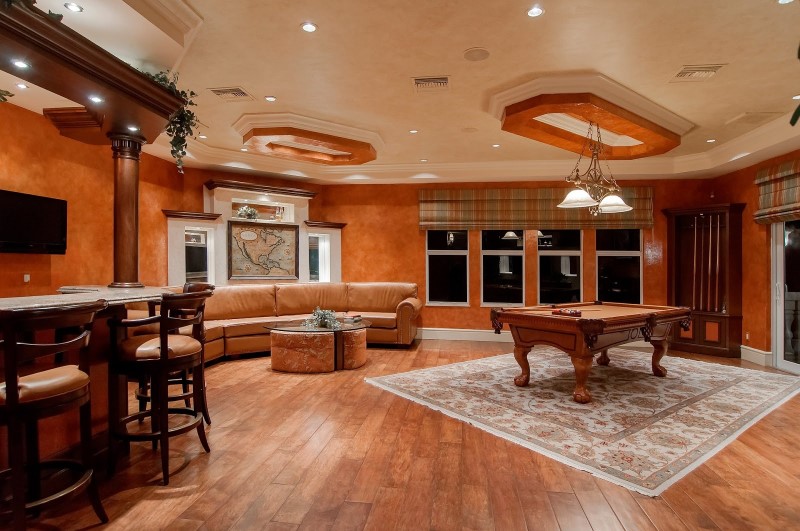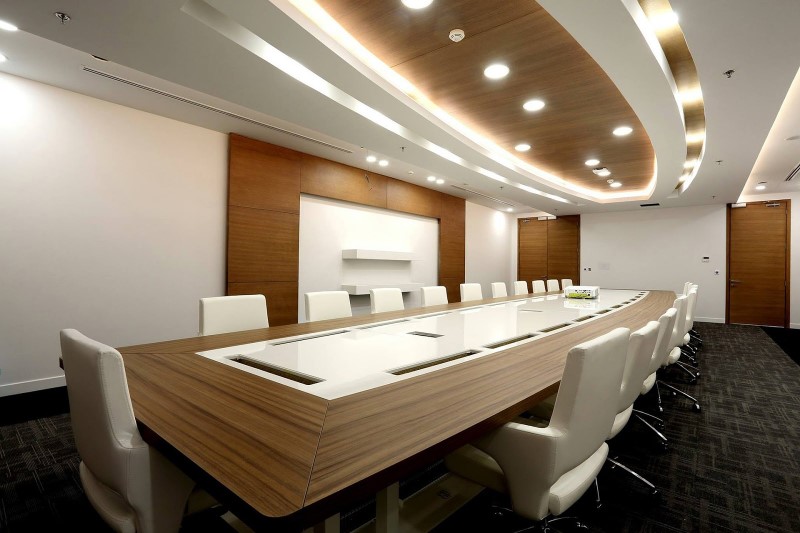2021/07/07 14:16:34
How to Protect Your Original Furniture Designs at Furniture Fairs

Source: https://pixabay.com/
Getting ready for a furniture exhibition is half the work. The booking of slots, transporting the product to the venue, getting accommodation, all these are done to ensure that the exhibition itself is a complete success. But there's one area that many first-timers overlook and that’s the protection of furniture patents. One thing about these exhibitions is that they are staged for days and many people get to see them. So how do you protect your unique designs from being stolen or copied?
We are going to look at the ways that exhibitors can protect their original furniture designs at furniture fairs, compare original and replica design furniture, look at why furniture patents are important to the people involved in the exhibitors and how the patent laws operate in the biggest markets around the world like China and the USA. If you have been curious to know about furniture patents and how they come into play when it comes to protecting what is being showcased, then stick around to the end.
Original Design Furniture Vs Replica Design Furniture

Source: https://unsplash.com/
Like any other solid object that can be found in any physical state, anything can be replicated and passed off for the original. This has been a problem that has plagued the furniture industry for years and furniture fairs are not immune to potential copyright infringements. So the main question here becomes, how would you tell original design and replica designs apart? Are there things that one has to be on the lookout for? To understand this, we have to go deep and explore what original and replica designs actually are.
Original Designs
An original furniture design is simply a furniture style that cannot be replicated as they are protected by copyright laws for a given amount of time. Most of the original designs usually come with patents that protect them for about 15 years.
What are the benefits of this? By holding exclusive rights for producing a given design of furniture, the creator is given the autonomy to reap the benefits of their creativity by being the sole producer of the said furniture design. And once that time has elapsed, then the design patent becomes public and anyone who has the ability to replicate the design gets to do that without having to worry about any blowback as far as the law is concerned.
Replica Designs
Pound for pound, replicas pale in comparison when set side by side with original designs. Replica designers are very talented people but no matter how hard they try, they simply cannot reproduce an origin's design for what it is. However, being good enough is what it takes for them to be successful.
A word of clarity, replica designs don’t necessarily mean that the furniture in question is of low quality. It mostly means that it is a reproduction of what has already been made before. The materials used are what makes furniture quality or not.
How To Tell Original Designs from Replica Designs

Source: https://unsplash.com/
To an untrained eye, telling if a piece of furniture is a replica would be next to impossible. In fact, even those that claim to be experts require to know the history of the original designs in order for them to be able to discern that what they are looking at are replicas in the first place. However, there are some tell-tales gins that you can rely on to figure the difference out.
● Shell Color: Original designs have a very rich shell color and all it takes is a single glance to tell that. Replicas on the other hand have this chalky white appearance that gives them a much lighter tone, almost as though they had been made just recently.
● Fixtures: For original designs, the names and the screws match the color of the wood and finish while replicas tend to go with chrome screws and that’s a good way to tell the two apart.
● Timber Dowel: On replica designs, the timber edges are usually splintered and unfinished, and a little less polished. In original designs, there’s more attention to detail and most of the defects are well hidden away.
● Timber Color: Replica designs have a more blonde finish compared to original designs that are darker and more richer.
The Importance of Furniture Patents

Source: https://unsplash.com/
Patents in the furniture world serve a number of functions for a wide range of stakeholders. They offer protection of creativity and at the same time, they protect consumers from having to waste their money through falsehoods. The following are some of the reasons why furniture patents are important to exhibitors, customers, and the furniture market.
To Designers/Exhibitors
Furniture designers usually double up as exhibitors who use these events to showcase their latest designs to the world. This means they are exposing their talent to a world that is full of people who may take advantage of what they made to make money off. So, furniture patents are of great importance to designers in the following ways.
● It protects their creations from exploitation as there are ramifications for anyone who is caught reproducing something that is still covered by patents.
● It gives the designer more time for them to reap financial benefits from their creations. A chance to monopolize what they created before it is released to the public.
● It gives them the freedom to display their designs to the world without any fear of being ripped off and this further solidifies their reputation in the furniture industry.
● It makes it easy for investors to pump in their money as the patents act as security for a very long time.
To Customers
Customers are the consumers of anything that is created and displayed by the designer and exhibitors. To that extent, they are important stakeholders as they are the ones with the purchasing power, and therefore, patents that cover the furniture they buy accords them the following benefits.
● It protects them from using replicas that may be faulty and could lead to injury. Therefore, it is a matter of personal safety and health.
● Patents protect consumers from exploitation from unscrupulous people who are brazen enough to reproduce original designs without permission while selling them at original price tags.
To Furniture Market Environment
The furniture market has been around for years and what has been propping it up for years is the constant flow of unique furniture designs that are produced every year to keep the consumers satiated. Patents are important to the furniture market environment in the following ways.
● It helps maintain prices for original design at levels that are beneficial for everyone involved. Good enough to reward the efforts of the designers and affordable enough to be bought by the consumers.
● Patents give legitimacy to the furniture industry and any other related sectors like furniture fairs and exhibitions. Without them, the furniture markets would be just any other market where people make whatever they see at the expense of the creators, disrupting prices.
Types of Intellectual Property Your Furniture Exhibition

Source: https://pixabay.com/
Showing up to a trade show is a huge undertaking. You are basically announcing to the world that you have made the next big breakthrough that they should now focus on. Not all the people that come looking will have good intentions and for this reason, you have to go prepared. For your innovative product or service to stand the test of time, there are about 5 Intellectual Property types that you can consider to be on the safe side. They include the following.
Utility Patent Protection

Source: https://patentrebel.com/wp-content/uploads/2019/12/utility-patent.jpg
In places like America, there are two types of patents under this section: utility patents and design patents. A utility patent will protect all the functional tenets of an invention for about 20 years from the date of filing. For one to be qualified for this patent, they must show the novelty of their design and prove that it is non-obvious in a way that is entirely and meaningfully different from any other thing created before.
Sometimes, a new furniture design doesn't have to be 100% new. Sometimes all it takes for a design to be considered patent worthy are slight differences to something seen before, as long as the designer demonstrates that these subtle differences are able to create significant changes that can be seen or felt.
The most important thing to keep in mind as far as utility patent protection is that choosing to unveil a product or an idea at a furniture show before filing your patent application, provisional or nonprovisional, you will essentially be giving up your patent rights and anyone can beat you to it without any ramifications. So always file your patents.
Design Patent Protection

Source: https://intellectuallylegal.files.wordpress.com/2017/11/design-patent-registration-in-india.png?w=663
While a utility patent handles how the product works, a design patent protects how it looks, and that’s the easiest thing to replicate, making a design patent one of the most important patent protections in the furniture world. In a nutshell, a design patent protects the stylistic and ornamental elements that are used in a furniture design. A design patent lasts for 15 years from the date of issue and it prevents the creation and selling of any design of identical appearance anywhere on the planet.
Just like utility patents, a design patent cannot cover what is already known. If you do choose to file a design patent for something that is almost similar to what is considered a prior design, the onus will be on you to provide sufficient evidence that the design you have come up with is better and works in a more efficient way compared to what’s already in the market.
Trademark Protection

Source: https://pixabay.com/
Trademark patents grant you the protection to stop other people in the same industry as you from naming their products with the same name or other identifiable features similar to what you just created. For most in the furniture industry, once a furniture design has been named, copying that would do your brand more harm than good and for this reason, many never even dare. It's also for this reason that trademark protections are recognized by the law even without any filing. However, it's always advisable to file your trademark patents for future purposes as you never know how big things may get.
Trademark patents are cheaper compared to the other two and they are subject to modification along the way. Therefore, if you are a furniture designer with a good chance of coming up with good names, then make it a habit to file trademark patents for any idea that you decide to make public.
Freedom to Operate

Source: https://pixabay.com/
A patent gives you the freedom to operate and nowhere is this more important than in a furniture exhibit. Most times, when presenting your products for the world to see, you will always get visits from people who appear to be extra keen at investigating your design. Be advised that they are not admiring your work, they are looking for evidence of anything that may be infringed on what they have. In the same way that you are protecting your products from copycats, your competitors are also invested in protecting what they believe is theirs.
If you are preparing for a furniture show of any kind and you have doubts about your design, consult an IP counsel before making any moves in order for them to investigate any possible infringements that may come back to bite you. This will also protect you from any suit that may be rough against you by a competitor. Always cover your bases.
Trade Show IP Clauses

Source: https://pixabay.com/
There’s nowhere else on the planet will a clash of IP cases be higher than at a furniture trade show and the reason is simple. Furniture exhibitions are the one palace where you will find the highest numbers of furniture designers and the chance of a couple of furniture pieces looking similar is very high. So how do you deal with this?
Most trade shows require exhibitors to sign a contract for participation that has IP clauses that give detailed procedures that have to be followed in case an IP dispute pops up as the show is being carried out. Such disputes are usually handled by an arbitrator working for the show and will only escalate into a full-blown legal case if a solution is not found. Caes of a competitor filing a suit against you based on this is very common and being prepared with all your options open is the best way to approach the whole matter.
How CIFF Protects Original Furniture Design

Source: https://www.ciff-gz.com/en/
The Contemporary Chinese Furniture Design Exhibition has been home to one of the most extensive and biggest furniture fairs in the world. This has provided an opportunity for many budding designers to get their work out there to the world, but that has also come with a number of setbacks as far as copyright infringement is concerned.
Having such a huge audience also provides a chance for the designs to be stolen. So how exactly does CIFF ensure that every remarkable design that’s unveiled on its platform is protected? The following are some pointers that help this get done.
● Being an internationally recognized event, ICFF receives the backing of the most prominent regulatory bodies in the world and this provides the ICFF with the right resources to protect any new design that’s showcased at their event. This is how it has been able to inspire confidence in furniture designers all these years.
● ICFF has its own stringent rules that ensure no one gets the chance to steal an idea that isn’t theirs. These rules have to be followed and any entity that attempts to break them usually receives an international blackout that effectively confines them to obscurity.
● ICFF also provides arbitrators on the floor of their trade shows who are able to deal with any copyright infringement issues that may happen as the event continues. These arbitrators are who ensure that the event continues uninterrupted unless the issue requires the attention of the law.
● ICFF also provides avenues for designers to file their provisional and nonprovisional patents on the floor of the venue before they unveil their products. Sometimes a designer may want to attend a furniture fair but getting their hands on patents is impossible in their one home country. ICFF provides the opportunity for them to do that without worrying about them getting jacked.
How to Protect Your Original Furniture Designs
Having established how important it is to protect your unique furniture designs and the number of patents that you can choose from depending on the aspect of your furniture that you want to protect. The next important question now is, how do you go about this? The following are the notable ways that you can get this done for your peace of mind.
Building your Brand

Source: https://pixabay.com/
Sometimes, the best way to ensure that no one messes with your designs is to have a brand so comprehensive and clear to the point where everybody who sees the brand automatically connects it to you. This will make it harder for anyone thinking of taking advantage of what you make as they will have a hard task of explaining to their consumer how they ended up making something that looks identical to yours. Work on your brand and develop it into a force that cannot be ignored.
File Patents

Source: https://unsplash.com/
Always file your patents, starting that process in itself gives you the legitimacy to lay claim on any design that may appear to be ripping off what you made. Filing a patent is the only thing that will stand in a court of law because whether you like it or not, people will come for your designs and there’s very little you can do to stop them. There are different types of patents as we have discussed already, the bottom line here is that you have to file a form of a patent before unveiling anything, no matter how small it may be.
Seek Legal Professionals

Source: https://pixabay.com/
There are patent laws in every country and there are whole departments that focus their energy on dealing with them. These departments are run by all kinds of professionals and this includes lawyers. As a furniture designer, be aware of your limitations, you cannot handle everything and as far as patents are concerned, you are better off in the hands of a legal professional who understands the law and how it works. Always seek the services and the advice of professionals, it will cost you but the fees you will pay to do things the right way will be way lower than what will cost you if you don’t.
Seek Help from the Exhibition

Source: https://pixabay.com/
Every furniture exhibition provides avenues that allow vendors to deal with infringement issues all the time because they understand that ideas can look the same once in a while. Therefore, it is important that you talk with the organizers of any trade show that you attend for advice if you feel like your design may attract some trouble or if you have not yet filed the relevant patents.
Do your Research
Honest mistakes happen all the time and the possibility of two designs looking almost the same is not far-fetched. For instance, chairs will tend to have four legs and sitting space, and a backrest, so when designing something from scratch, it will still follow this framework, save for your unique additions. Therefore, do your research before coming up with what you consider to be unique before working on anything. This will save you from a lot of problems.
Things to Consider When You File a Patent Application
Filing a patent application is not a small thing, it is an important event that will impact the future of your business as a furniture manufacturer. Therefore, it has to be treated with all the respect it deserves and the best way to do this is to pay attention to the following factors.
Know the Purpose

Source: https://unsplash.com/
Why are you filing the patent? That’s the question you need to ask yourself when it comes down to it, don’t simply do it because it feels right or because you see others do it. It has to address your most important need and that’s to protect what you honestly believe is the best design or idea you have ever come up with. A proper patent should be able to grant you the following privileges.
● Exclusive rights and the means to stop infringers in their tracks.
● Proof of ownership as it will act as the public prior document against anyone who may attempt to claim otherwise.
● It will act as a deterrent to your direct competitors.
● A patent is a valuable asset that can be monetized at some point.
● It increases your negotiating power.
● It attracts serious investors as they know their interests are anchored by a solid patent.
Filling Method

Source: https://unsplash.com/
Each type of patent has its own unique style of filling and that should be adhered to strictly since a single misplaced word can be used to render it void in a court of law. This is why using the services of a qualified lawyer is highly recommended as they will not miss anything. Each patent application is subject to different laws and these vary from state to state in the United States and from nation to nation in other parts of the world.
The Budget

Source: https://unsplash.com/
Patents are not cheap and this has been the stumbling block for many people with good ideas who are unable to protect any good idea that pops up in their head. The cost of filing a patent ranges from $5,000 for a simple idea and can go to as high as $16,000 for a complex one. Clearly, these are rates that cannot be sustained by any small business or an individual designer. Factor in this when trying to file one.
The Deadlines
Every patent has a deadline, they will not stay forever and you need to understand exactly what this means, what you can do within that time frame, and what will happen once that time elapses. Some of the longest patents in the furniture industry last up to 20 years. Once that time elapses, the public will be able to replicate your designs without any ramifications from the law.
The Attorney
 Source: https://unsplash.com/
Source: https://unsplash.com/This cannot be stressed well enough. Always involve an attorney in all your patent transactions. Patent laws are very extensive and the requirements needed to file one comes in the form of huge piles of paperwork that may be too much for you as a designer. You need to get a lawyer who can cut down the unnecessary chaff and show you the most important angles for easy comprehension.
Conclusion
Protecting innovations has been the backbone of civilization for quite a while now and that will not change anytime soon. The furniture world is one of the most diverse sectors that are full of all types of talented designers who constantly come up with new and exciting furniture trends that require protection. If you are one of them and you still need to know more about future patent laws and how they can help you in your next exhibition, then head on over to our website and have all your questions answered by our team of experts.
Looking for the latest furniture designs and the best suppliers?
0/500
All comments
No data.